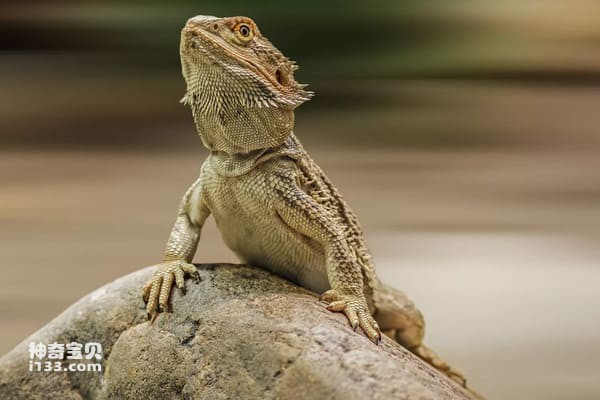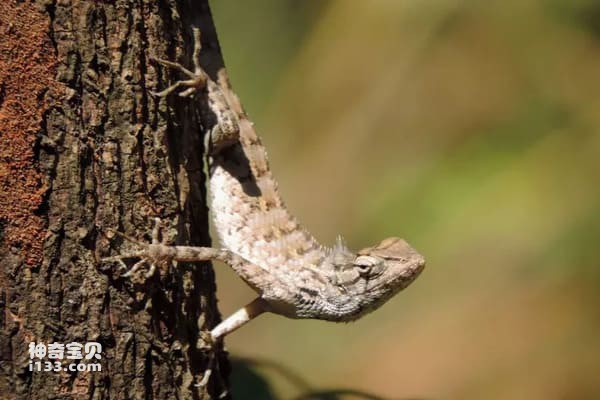Bearded dragons are cold-blooded, semi-arboreal lizards of the genus Saurus with spiny scales on their backs and a pouch under their chin. They live in arid areas, including Australia's savannas and deserts. They belong to the class Reptiles, and there are currently seven different species of bearded dragons. The most common is the central bearded dragon (P. vitticeps). These lizards are often kept as pets.

Scientific name: Pogona
Common names: Bearded lizard, Australian tuatara
Order: Squamata
Basic Animal Group: Reptiles
Size: 18 to 22 inches
Weight: 0.625 to 1.125 lbs.
Lifespan: Average 4 to 10 years
Diet: Omnivorous
Habitat: Desert, subtropical woodland, savanna and scrubland
Protection status: no worries
Fun fact: Bearded dragons are one of the most popular reptile pets because they are kind, curious, and active during the day.
Bearded dragons are named for the spiny scales on their throat pouches, which inflate when threatened. They have triangular heads, rounded bodies, and thick legs. Depending on the species, they range in size from 18 to 22 inches and can weigh up to 1.125 pounds. They are cold-blooded, semi-arboreal animals that are often found on tree branches or fences. Bearded dragons also have powerful jaws that can crush hard-shelled insects.
Depending on the environment, P. vitticeps varies in color, ranging from brown to tan with red or gold highlights.

Bearded dragon on tree trunk.
Bearded dragons are found throughout Australia. They thrive in warm, arid areas such as deserts, subtropical woodlands, savannas, and scrubland. P. vitticeps is found in eastern and central Australia. They are also bred for the pet trade in the United States.
As omnivores, bearded dragons eat leaves, fruits, flowers, bugs, and even small rodents or lizards. Thanks to their strong jaws, they are able to eat hard-shelled insects. For Eastern Bearded Dragons, up to 90% of the adult diet consists of plants, while the diet of juvenile dragons is dominated by insects.
Adults are very aggressive and often fight for territory, food, or females. Males have been known to attack non-compliant females. They communicate by shaking their heads and changing the color of their beards. Fast movements indicate dominance, while slow movements indicate submission. When threatened, they open their mouths, blow their whiskers, and hiss. Some species undergo hibernation, a form of hibernation in the fall or winter that is characterized by a lack of diet.
Mating occurs sometime during spring and summer in Australia, from September to March. Male dragons woo females by waving their arms and shaking their heads. The male then bites the back of the female's neck during mating. The female digs a shallow hole in a sunny location and lays two clutches of 11 to 30 eggs each. When hatching, the dragon's gender changes depending on the temperature. Warming temperatures can turn developing males into females and make some bearded dragons learn more slowly. After about two months, the eggs will hatch.

A male bearded dragon shows off his beard.
There are seven different species of bearded dragons:
Eastern bearded dragon (P. barbata), lives in forests and grasslands
Black bearded dragon (P. henrylawsoni), found in grasslands
Kimberly bearded dragon (P. microlepidota), living in the savanna
Western bearded dragon (P. minima), found in coastal areas, savannas and shrublands
Dwarf bearded dragon (P. small)
Nullarbor bearded dragon ( P. nullarbor ), found in scrub and savanna
The central bearded dragon ( P. vitticeps ), the most common species, lives in deserts, forests, and shrublands
All bearded dragon species are designated as species of least concern by the International Union for Conservation of Nature (IUCN). The population is classified as stable.
Bearded dragons, especially P. vitticeps, are very popular in the pet industry due to their cheerful temperament and curiosity. Australia has banned wildlife exports since the 1960s, ending the legal capture and export of bearded dragons from Australia. Today, people breed bearded dragons to achieve their desired color.
animal tags:
We created this article in conjunction with AI technology, then made sure it was fact-checked and edited by a Animals Top editor.